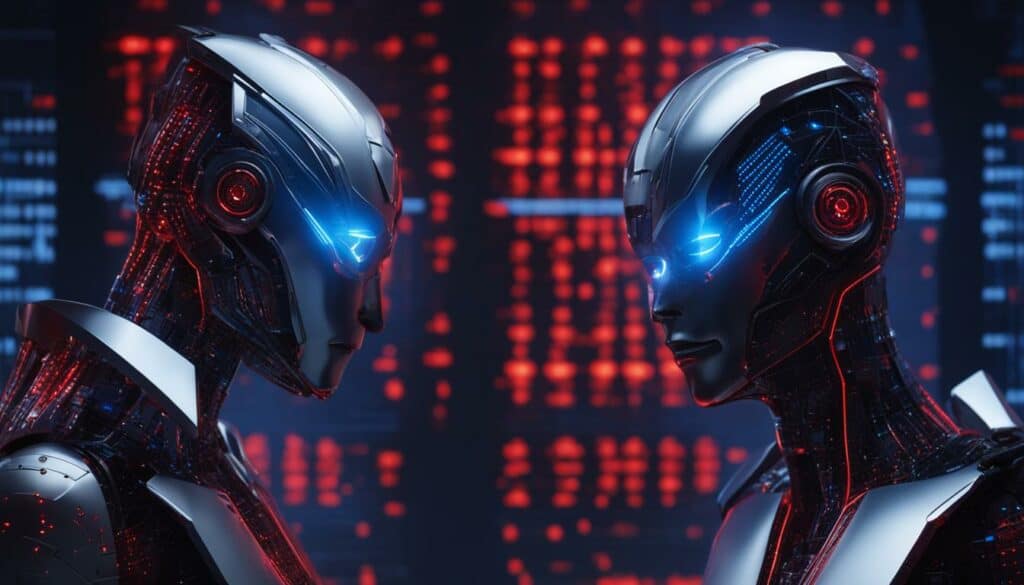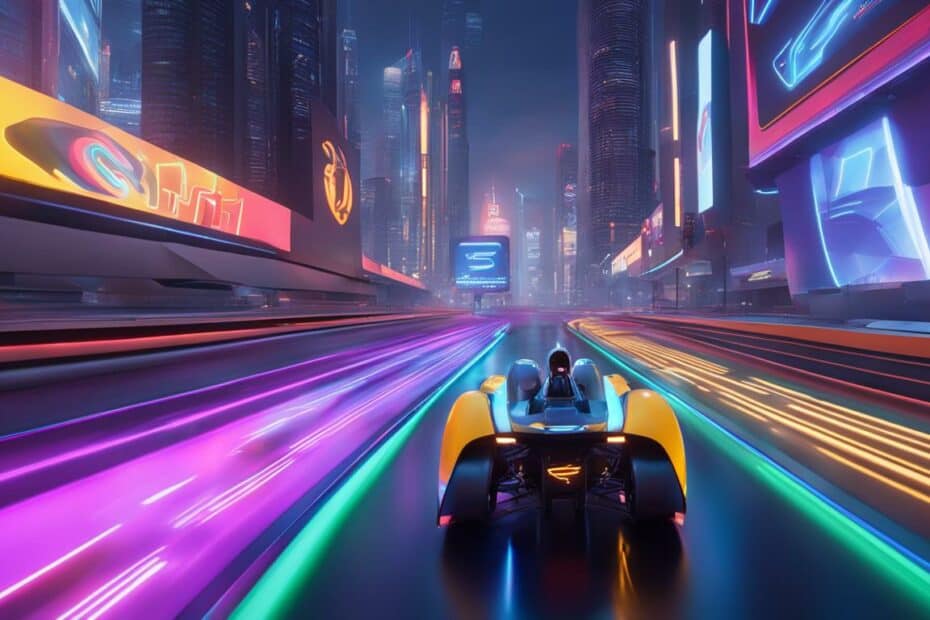This article delves into the features, training, and future prospects of ChatGPT vs Google Bard to help you determine which one is the ideal choice for your needs.
ChatGPT and Google Bard are two leading AI chatbots vying for the top spot in the world of conversational Artificial Intelligence.
With the increasing demand for advanced language models and virtual assistants, these chatbots have been developed to revolutionize user interactions and provide intelligent responses.
ChatGPT vs Google Bard: Key Takeaways
- ChatGPT and Google Bard are powerful AI chatbots in direct competition.
- Both chatbots utilize Large Language Models (LLMs) and extensive training data to generate text and images.
- ChatGPT offers a free version and a paid ChatGPT Plus tier with additional features, while Google Bard is free for all users and integrated with Google apps.
- In 2024, AI chatbots are expected to evolve with advanced multimodal capabilities and improved personalization options.
- ChatGPT is trained on the WebText dataset, whereas Google Bard leverages the Infiniset dataset.
How the chatbots compare
ChatGPT and Google Bard offer distinct features that differentiate them from each other.
ChatGPT provides users with both a free version and a paid ChatGPT Plus tier that offers additional functionalities (here’s a detailed comparison: ChatGPT Plus vs ChatGPT vs alternatives).
With ChatGPT Plus, users can enjoy features like PDF analysis, custom bot creation, and AI image generation. On the other hand, Google Bard is available for free to all users and is continuously integrated into various Google apps.
Both chatbots share common capabilities, such as the ability to generate text and code, analyze images as prompts, and access the web for up-to-date information.
However, there are certain exclusive features that set them apart. ChatGPT Plus subscribers can take advantage of web access and custom bot creation, which can enhance the overall user experience.
To provide a clearer picture, here is a comparison of the key features offered by each chatbot:
| ChatGPT Features | Google Bard Features |
|---|---|
| Create custom bots | Integration with various Google apps |
| Analyze uploaded PDFs | Retrieve responses from the web |
| Generate AI images | Free for all users |

You might also be interested in finding out if ChatGPT will replace human writers and how to make money with ChatGPT.
What’s next in 2024?
In 2024, the future of AI chatbots, including ChatGPT and Google Bard, looks promising as both platforms continue to innovate and introduce new features (read more ChatGPT statistics here).
One of the key advancements expected is the growth of multimodal AI, which will enable chatbots to accept different types of input, such as text and images, making interactions with users more advanced and user-friendly.
Personalization options will also be a focal point, allowing chatbots to provide more relevant and tailored responses to individual users. This increased personalization will enhance user experiences and foster stronger engagement with the chatbot platforms.
Furthermore, both OpenAI and Google are likely to integrate their chatbots into a wider range of apps and services, expanding their usage and capabilities.
This integration will enable users to interact with the chatbots seamlessly and make them an even more integral part of their daily lives.
The future of AI chatbots in 2024 will prioritize improving response times and accuracy, ensuring that chatbots can deliver prompt and accurate responses to user queries.
Additionally, there will be a focus on expanding the functionalities of the chatbots, allowing them to perform more complex tasks and provide comprehensive assistance across various domains.
As the field of AI continues to advance, AI chatbots will pave the way for innovation and AI-driven interactions in various industries.
The future of AI chatbots holds immense potential and will undoubtedly shape the way we interact with technology (check out our findings on the future of white collar work in the age of AI).
Key Innovations in 2024:
- Advancement in multimodal AI for improved user interactions
- Increased personalization options for tailored responses
- Integration with a wider range of apps and services
- Improved response times and accuracy
- Expanded functionalities for more comprehensive assistance

| Future of AI Chatbots in 2024 | |
|---|---|
| Advancement in multimodal AI | Improved user interactions through the acceptance of various input types, such as text and images |
| Increased personalization options | Chatbots providing more relevant and tailored responses to individual users |
| Integration with apps and services | Expanded usage and capabilities by integrating chatbots into a wider range of platforms |
| Improved response times and accuracy | Prompt and accurate responses to user queries |
| Expanded functionalities | Performing more complex tasks and providing comprehensive assistance |
How are chatbots trained?
AI chatbots like ChatGPT and Google Bard undergo extensive training processes to develop their capabilities in understanding user input and generating appropriate responses.
These chatbots rely on a combination of natural language processing (NLP) and machine learning algorithms to analyze data and learn patterns, relationships, and context.
Training data for AI chatbots typically includes conversation logs, customer reviews, and product specifications. Through NLP techniques, chatbots can understand the nuances of human language, identify user intents, and extract relevant information from user queries.
Machine learning algorithms play a crucial role in the training process by enabling chatbots to recognize patterns and make predictions based on the provided data (check out how to make money with machine learning).
These algorithms learn from input-output pairs, allowing chatbots to generate meaningful and contextually appropriate responses.
Advanced chatbots also incorporate technologies such as speech recognition, sentiment analysis, and image recognition to enhance their understanding and responsiveness. These technologies enable chatbots to interpret spoken language, analyze user sentiment, and process visual information.
Furthermore, chatbots can continuously improve their performance by learning from user feedback.
By incorporating feedback loops in the training process, chatbots can adapt and refine their responses based on user interactions, ensuring a higher level of accuracy and effectiveness.
Overall, the training of AI chatbots involves harnessing the power of NLP, machine learning, and other advanced technologies to create intelligent systems capable of understanding and engaging with users in a human-like manner.
| Training Data | NLP Techniques | Machine Learning Algorithms | Advanced Technologies | User Feedback |
|---|---|---|---|---|
| Conversation logs | Language understanding | Pattern recognition | Speech recognition | Continuous improvement |
| Customer reviews | Intent identification | Prediction modeling | Sentiment analysis | User-driven adaptations |
| Product specifications | Information extraction | Prediction optimization | Image recognition |
Deep Dive into the Training of ChatGPT and Bard
When it comes to training AI chatbots like ChatGPT and Google Bard, the datasets used play a crucial role in shaping their capabilities and performance.
Let’s explore the unique training approaches employed by these two chatbot models.
ChatGPT Training:
ChatGPT, developed by OpenAI, is trained on a dataset called WebText. This dataset is a massive collection of text, clocking in at over 45 terabytes, gathered by scraping websites across the internet.
WebText contains a diverse range of text genres, such as news articles, forum threads, and Wikipedia entries, enabling ChatGPT to learn and generate responses for a wide variety of topics.
With access to such a vast and varied dataset, ChatGPT can leverage its training to offer rich and contextually appropriate responses to user prompts.
It has learned to understand and generate text by identifying patterns, relationships, and context within the WebText corpus.
Google Bard Training:
Google Bard, on the other hand, is built on the LaMDA (Language Model for Dialogue Applications) language model.
To train Bard, Google utilizes a dataset called Infiniset, which is derived from multiple sources. This includes publicly available datasets, Google’s internal data, and data from third-party collaborations.
Infiniset provides a diverse range of conversational data, allowing Bard to learn and generate text-based on user prompts. The training process enables Bard to understand natural language input, identify intents, and produce relevant and human-like responses.
Comparing ChatGPT and Bard Training:
| ChatGPT | Bard |
|---|---|
| Trained on the WebText dataset with over 45 terabytes of text scraped from websites | Utilizes the Infiniset dataset derived from multiple sources |
| Includes diverse text genres, enabling generation of responses for various topics | Draws from publicly available datasets, Google’s internal data, and third-party collaborations |
| Understands patterns, relationships, and context within the WebText corpus | Trained on a diverse range of conversational data to provide relevant and human-like responses |
Differences between ChatGPT and Bard
When comparing ChatGPT and Google Bard, several key differences emerge. These distinctions encompass various aspects, including features, pricing, data utilization, and integration with other applications.
Understanding these disparities will allow users to make informed decisions based on their requirements and preferences.
Features
ChatGPT and Google Bard offer unique features that cater to different user needs. ChatGPT provides a free version and a paid ChatGPT Plus tier, granting subscribers exclusive benefits.
With ChatGPT Plus, users can enjoy features such as the ability to remember past conversations, analyze uploaded PDF documents, and generate AI images.
On the other hand, Google Bard is available to all users for free and excels in retrieving responses from the internet, providing up-to-date information.
Additionally, Bard seamlessly integrates with a variety of Google apps, leveraging their functionalities and expanding its capabilities.
Data Utilization
ChatGPT relies on its proprietary GPT-3 model, trained on a vast dataset collected before 2022. This massive dataset, known as WebText, comprises over 45 terabytes of text scraped from websites.
In contrast, Google Bard utilizes its LaMDA language model, which leverages a dataset called Infiniset. Infiniset encompasses multiple sources, including publicly available datasets, Google’s internal data, and collaborations with third parties.
Bard’s training involves incorporating more recent data, ensuring its responses are informed by up-to-date information.
Integration and Compatibility
Another differentiating factor between ChatGPT and Google Bard is their integration with other applications and services. ChatGPT offers integration options through its API, enabling users to incorporate the chatbot into their own applications or services.
Conversely, Google Bard benefits from its seamless integration with a wide range of Google apps. This integration allows Bard users to access its capabilities directly within these apps, enhancing productivity and convenience.
It is important to consider these differences when choosing between ChatGPT and Google Bard. The table below summarizes the distinctions for a comprehensive overview.
| Features | ChatGPT | Google Bard |
|---|---|---|
| Free Version | ✓ | ✓ |
| Plus Version (Paid) | ✓ | N/A |
| Remember Past Conversations | ✓ | N/A |
| Analyze Uploaded PDFs | ✓ | N/A |
| Generate AI Images | ✓ | N/A |
| Retrieving Responses from the Internet | N/A | ✓ |
| Integration with Google Apps | N/A | ✓ |
| Utilized Language Model | GPT-3 | LaMDA |
| Training Data | Prior to 2022 | Includes Recent Data |
The table illustrates ChatGPT’s and Google Bard’s distinct features, emphasizing the capabilities unique to each chatbot. This visual representation assists users in comprehending the disparities and guiding their decision-making process.
Conclusion: ChatGPT vs Google Bard
In conclusion, both ChatGPT and Google Bard have proven to be formidable AI chatbots with distinct strengths and capabilities. ChatGPT, launched by OpenAI, has quickly gained popularity and amassed a large user base since its introduction.
On the other hand, Google Bard benefits from its integration into the expansive Google ecosystem, granting it access to up-to-date information from the web.
The future of the AI chatbot landscape remains uncertain as to which platform will dominate. However, it is certain that both ChatGPT and Google Bard will continue to evolve and push the boundaries of AI technology.
This dynamic competition between the two chatbots will undoubtedly benefit users, as it will drive further innovation, enhanced user experiences, and expanded functionalities for AI chatbots as a whole.
As the race for AI chatbot supremacy continues, users stand to gain the most from these advancements.
With ongoing improvements and competition between ChatGPT and Google Bard, AI chatbots are poised to become even more capable and intelligent, further transforming the way we interact with technology.
The future certainly holds exciting possibilities for AI chatbots, and users can look forward to reaping the benefits of continued progress in this field.
FAQ
What are ChatGPT and Google Bard?
ChatGPT and Google Bard are AI chatbots developed by OpenAI and Google, respectively. They are designed to generate text and code based on user prompts and can access the web for information.
When were ChatGPT and Google Bard launched?
ChatGPT was launched in November 2022, while Google Bard came onto the scene in March 2023.
What features do ChatGPT and Google Bard offer?
Both ChatGPT and Google Bard can generate text and code, analyze images as prompts, and access the web for up-to-date information.
Is ChatGPT free?
ChatGPT offers a free version as well as a paid ChatGPT Plus tier with additional features.
Is Google Bard free?
Yes, Google Bard is available for free to all users.
What additional features does ChatGPT Plus offer?
ChatGPT Plus provides features such as the ability to analyze uploaded PDFs, create custom bots, and generate AI images.
Can ChatGPT and Google Bard be integrated into other apps and services?
Yes, both chatbots can be integrated into other apps and services.
How are ChatGPT and Google Bard trained?
They are trained using large amounts of data, including conversation logs, customer reviews, and product specifications.
Natural Language Processing (NLP) and machine learning algorithms enable them to understand user input and generate appropriate responses.
What datasets are used to train ChatGPT and Google Bard?
ChatGPT is trained on a dataset called WebText, which includes over 45 terabytes of text scraped from websites.
Google Bard is built on the LaMDA language model, which utilizes a dataset called Infiniset derived from multiple sources.
What are the differences between ChatGPT and Google Bard?
ChatGPT offers a free version and a paid ChatGPT Plus tier, while Google Bard is free for all users.
ChatGPT has the ability to remember past conversations, analyze uploaded PDFs, and generate AI images, which are exclusive features for Plus subscribers.
Bard can retrieve responses from the internet and is integrated with various Google apps.
Furthermore, ChatGPT uses its own GPT-3 model, while Bard utilizes Google’s LaMDA language model. ChatGPT is limited to data collected prior to 2022, while Bard uses more recent data.
What can we expect in the future for AI chatbots?
In 2024, AI chatbots are expected to evolve and introduce new features. Multimodal AI, personalization options, and integration into more apps and services are anticipated.
There will be a focus on improving response times, accuracy, and expanding functionalities.
